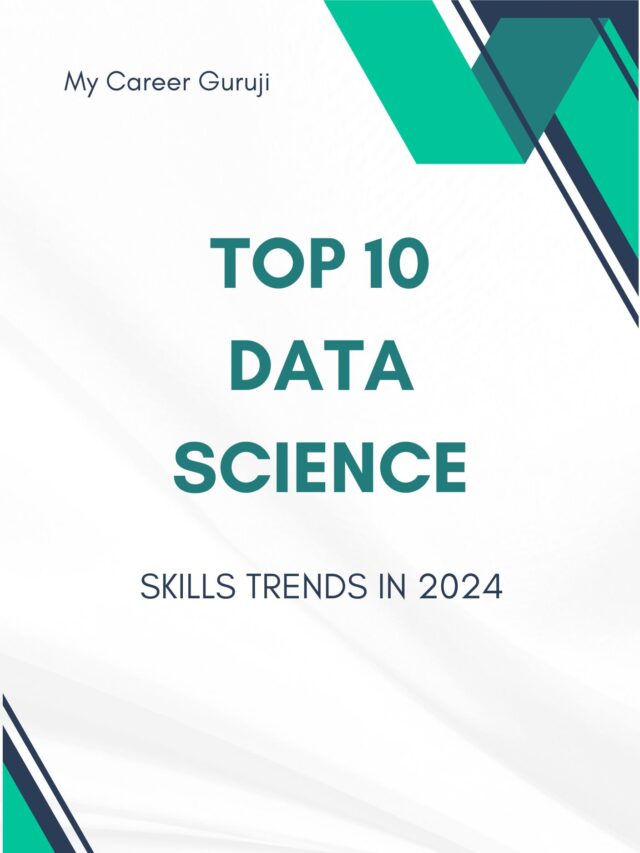Any computer science student or employee’s success depends on selecting the best computer science projects topic. Because of this, it is more likely that students or staff will be able to remain motivated and focused throughout the course of the project if the topic is important and engaging stay continue.
Top 30 Final year projects for computer science in 2023
If you are looking for top computer science projects, then you have come to the right place!
We discuss about computer science projects for final year student we will we will be taking a look at 30 interesting and inspiring best project topics for computer science students.
Table of Contents
Lets Discuss about List of Projects For Computer Science Students.
Basically we provide top list of projects for computer science students.
- Automatic vehicle parking management system (PMS) using computer vision and machine learning.
- Creating a safe and transparent online voting system based on blockchain.
- Natural language processing is being used to create a chatbot for customer support.
- Creating a mobile application for monitoring and analyzing air quality in real-time.
- Creating a smart surveillance system based on computer vision for public safety.
- Creating a recommendation system for e-commerce platforms using collaborative filtering and machine learning
- Creating a speech recognition system for people with disabilities that is based on deep learning.
- IoT and machine learning are being used to create an intelligent transportation system for effective traffic management.
- Designing an intelligent irrigation system for precision farming using IoT
- Developing an e-learning platform with personalized learning using machine learning
- Using computer vision and machine learning to construct an autonomous drone for object detection and tracking.
- Utilizing machine learning and natural language processing to create a customized news recommendation system.
- Designing a facial recognition-based attendance system for classrooms and workplaces
- Building a system for early detection and prediction of heart disease using machine learning.
- The creation of a chatbot with AI for mental health support and guidance.
- Designing a self-driving car using deep learning and computer vision
- Creating a machine learning-based fraud detection system for banking transactions.
- Building an intelligent traffic signal system using IoT and machine learning for traffic congestion control.
- Creating a virtual reality platform for immersive education and training.
- Designing a speech-to-text system using deep learning and natural language processing.
- Building a gesture recognition system for human-computer interaction using computer vision and deep learning.
- Utilizing the Internet of Things and machine learning, we are building an autonomous robot for the detection and removal of hazardous waste.
- Utilizing machine learning to construct a recommendation system for personalized healthcare.
- Creating a computer vision-based quality inspection system for manufacturing industries
- Designing a machine learning-based fraud detection system for insurance companies.
- Developing an AI-powered home automation system for energy management
- Building a computer vision-based fall detection and prevention system for the elderly
- Creating a system for sentiment analysis of social media data using natural language processing and machine learning
- Developing an intelligent weather forecasting system using IoT and machine learning
- Creating a computer vision-based system for precision farming’s automatic crop disease detection and analysis.
Read More: Top Data Science Courses
Engineering Computer Science Best Guide
Best 10 Computer Science Projects ideas
So basically we provide computer science projects ideas in future your want to work on this topics then you are on perfect place stay tune!
1. Hospital Management System
Hospital Management System (HMS) is a software application that helps manage the operations of a hospital or healthcare facility.
The primary objective of an HMS is to automate and streamline various administrative, clinical, and financial processes within a hospital, with the aim of improving the quality of patient care.
The key features of an HMS may include:
Patient management: Features like patient registration, appointment scheduling, medical records management, and discharge summaries are included in this module.
Doctor management: Features like doctor registration, appointment scheduling, consultation management, and prescription management are included in this module.
Inventory management: Capabilities of this module include keeping track of expiration dates, creating purchase orders, and managing the stock levels of medical equipment and supplies.
Billing and accounting: Module has functions like producing invoices, monitoring payments, controlling accounts payable and receivable, and producing financial reports.
Electronic health records: Electronic capture and storage of patient medical records, including diagnoses, lab results, and x-rays, is one of the features offered by this module.
Pharmacy management: This module has capabilities like managing drug inventory levels, keeping track of expiration dates, and creating purchase orders.
Laboratory management: This module has capabilities like managing equipment maintenance, tracking patient test results, and producing reports.
2. News Feed App
A News Feed App is a piece of software that compiles and displays news articles and other content from various sources all in one location. A News Feed App’s main goal is to give users a personalized and practical way to consume news and keep up with current events.
The key features of a News Feed App may include:
Content aggregation: The app gathers news stories, blog posts, videos, and other content from a variety of websites and feeds, including well-known news websites, social media networks, and RSS feeds.
Personalization: By choosing preferred topics, sources, and locations, the app lets users personalize their news feed.
Filtering and categorization: The app categorizes news articles by topics, such as sports, politics, or entertainment, and allows users to filter articles based on their interests.
Push notifications: When significant stories or breaking news are published, the app notifies users via push notifications.
Social media integration: The app enables users to follow news organizations and journalists on social media and share articles on social media.
Search functionality: Users of the app can look for articles by topics or keywords using the search bar that is available.
Bookmarking and saving: The app allows users to save articles for later reading or bookmark articles they want to refer to later.
Read More: Best Preparation Tips For Artificial Intelligence and Machine Learning
3. Library Management System
A software program called a Library Management System (LMS) aids in managing a library operations. In order to increase the effective ness and efficiency of library services, the main goal of an LMS is to automate and streamline various administrative and operational processes within a library.
Some of the key features of an LMS may include:
Cataloging and inventory management: The management of the library’s collection, classification of books and other materials, and monitoring of borrowed and returned items are just a few of the features offered by this module.
Borrower management: Manage borrower registration, track borrowing history, and levy fines for overdue items are just a few of the features offered by this module.
Circulation management: This module has functions like managing item checkouts and returns, monitoring reserved items, and creating usage reports.
Acquisitions management: This module includes features such as managing the library’s budget, ordering new materials, and tracking orders and invoices.
Reporting and analytics: This module includes features such as generating reports on library usage, analyzing item circulation trends, and identifying popular items and borrowing patterns.
Interlibrary loan management: This module has functions for managing interlibrary loan requests, keeping track of loan agreements, and creating reports on loan activity.
3. Virtual Private Network
With the help of a Virtual Private Network (VPN), users can safely connect to a private network over a public network, like the internet.
VPN’s main purpose is to give users a private and secure connection that encrypts all data sent between their device and the private network.
The key features of a VPN may include:
Encrypted communication: A VPN makes it more challenging for outside parties to eavesdrop on communications by encrypting all data sent between the user’s device and the private network.
Authentication and access control: A VPN requires users to authenticate themselves before accessing the private network and may include access controls to limit the data that can be accessed by each user.
Remote access: Employees who must work from home or while traveling will find a VPN to be useful because it enables users to access the private network from any location with an internet connection.
Geolocation spoofing: By giving the impression that the user is connecting to the internet from another location, a VPN can be used to get around content geo-restrictions.
Malware protection: Some VPNs include malware protection features to detect and block malicious software.
4. E-Authentication System
E-Authentication systems are designed to make sure that only authorized users can access sensitive data or carry out particular tasks inside an information system. Individuals can use an e-Authentication system to securely access digital services, applications, and data by demonstrating their identity.
In most cases, this is accomplished by using authentication techniques like passwords, tokens, biometrics, or digital certificates.
They play a crucial role in preventing online crimes like fraud, identity theft, and others. E-authentication systems are used to address security issues with online transactions, electronic health records, financial services, and government services, among other applications.
There are different kinds of e-Authentication systems, including single-factor authentication (using passwords), two-factor authentication (using a password and a text message code), and multi-factor authentication (using a password, biometric data, and a smart card).
5. Real-time web search engine
Real-time web search engines are a particular kind of search engine that offer search results that are continuously updated to reflect the most recent information on the web.
Real-time search engines use a variety of strategies to continuously monitor and index new content as it is published, such as through RSS feeds, social media platforms, news outlets, and other sources, in contrast to traditional search engines that crawl and index web pages irregularly.
For keeping up with breaking news, popular topics, and other events that are developing quickly, real-time search engines are particularly helpful. Compared to conventional search engines, which might not reflect the most recent information, they offer search results that are more timely and relevant.
Users can keep tabs on trends and conversations across numerous platforms, such as social media, blogs, and news websites, thanks to real-time search engines.
6. Chat App
A chat app is a kind of computer program that enables users to communicate with one another in real time via text, voice, or video. In recent years, chat apps have grown in popularity, especially with the rise of mobile devices and the growing demand for remote communication and collaboration.
Users of chat apps can typically create profiles, look up contacts, and start conversations with them. Messages, file and image sharing, voice and video calls, and file and image sharing are all other options available to users. The ability to send animated emojis and stickers, group chats, read receipts, and other features are all included in some chat apps
Chat apps are useful for many different things, such as interpersonal communication, teamwork, customer support, and more. WhatsApp, Facebook Messenger, WeChat, Skype, Slack, and Microsoft Teams are just a few of the widely used chat programs.
7. Theater Booking Website
A specific kind of online store called a theater booking website enables customers to order tickets for live performances at theaters, including plays, musicals, and other theatrical events. These websites typically offer a venue for theater proprietors and production companies to list their events, as well as a way for users to look for, evaluate, and buy tickets for particular performances.
To assist users in finding and reserving tickets, a theater booking website might provide a range of features and services. These might include search filters that let users focus their search by a number of criteria, such as date, time, location, price, preferred seating, and more.
Additionally, the website might provide interactive seating charts that let users choose particular seats or sections in accordance with their preferences and financial constraints.
Read More: Best Guide For Engineering Admission Process
8. Message Spam Filtering
Message spam filtering is the process of identifying and preventing unwanted or unsolicited messages (also known as spam) that are sent via email, messaging services, or other digital communication channels.
Message spam filtering aims to lessen the amount of unwanted or harmful messages that users must deal with by preventing spam messages from reaching the intended recipients.
The methods for message spam filtering include rule-based filters, content-based filters, and machine learning-based filters. Rule-based filters use preset rules and patterns to recognize and block spam messages, such as keywords or patterns that are frequently found in spam messages.
Content-based filters examine the content of a message and employ machine learning algorithms to spot patterns and traits of spam messages, such as repetitive or deceptive content, and then block the message based on its likelihood to be spam.
In order to identify new patterns and trends in spam messages, machine learning-based filters employ a more sophisticated method of message spam filtering. Compared to rule-based or content-based filters, these filters can adjust to new spam strategies and are typically more successful at removing spam messages.
Message spam filtering systems can protect users by identifying phishing attempts, detecting malware, and blocking suspicious IP addresses, among other methods in addition to filtering out spam messages.
9. Ecommerce Website
A particular kind of online platform that enables companies to sell their goods or services online is known as an ecommerce website. Customers can browse and buy goods and services on e-commerce websites at any time, from anywhere in the world, using a variety of payment options.
Ecommerce websites typically offer a range of features and functionality to support online shopping, including product catalogues, shopping carts, payment gateways, shipping and delivery options, and order management tools.
To increase customer engagement and satisfaction, they may also include extra features like client testimonials, suggestions, and tailored shopping experiences.
Ecommerce websites frequently include other tools and services, such as inventory management, sales analytics, and customer relationship management (CRM) tools, to aid businesses in managing their operations in addition to offering an online storefront.
These tools can be used by businesses to monitor sales and consumer behavior, spot trends and business opportunities, and handle client relations.
Examples of popular ecommerce websites include Amazon, eBay, Alibaba, and Shopify, among others. Ecommerce websites have revolutionized the way businesses operate, making it easier for businesses of all sizes to reach a global audience and sell their products or services online.
10. Wireless Sound Control
A technology known as wireless sound control enables users to wirelessly control audio equipment, including speakers, amplifiers, and other types of sound gear.
Without using physical cables or connections, wireless sound control enables users to modify volume, playback, and other audio settings from a distance.
In order to connect audio devices to a remote control device, such as a smartphone, tablet, or laptop, wireless sound control technology typically uses wireless protocols such as Bluetooth, Wi-Fi, or Zigbee. Instead of physically connecting the devices, this enables users to remotely control audio playback and other settings.
Wireless sound control can also offer additional features and functionality beyond basic volume and playback control. For example, some systems may allow users to create custom playlists, adjust equalizer settings, or even control the lighting and other visual effects in sync with the audio.
Read More: Best Prompt Engineering Courses In India
Engineering Admission Process
Computer Science Projects for Final Year (Topics) FAQs
Q: What are some good computer science projects topics for 2023?
Ans: Depending on your interests and the most recent developments in the field, there are numerous worthwhile computer science project topics for 2023. Machine learning, artificial intelligence, cybersecurity, data analytics, natural language processing, block chain, and quantum computing are a few examples of potential topics.
Q. What is the best project for computer science?
Basically we provide computer science projects must read this list:
Top 5 Computer Science Projects Topics
1. Optical Character Recognition System
2. Library Management System.
3. Virtual Private Network.
4. e-Authentication System.
5. Real-time web search engine.
Q. What are the 5 big ideas of computer science projects?
Ans: Basically computer science projects provide 5 ideas. Creativity, Abstraction, Data and Information, Algorithms, Programming.
Q. What are some of the computer science projects for class 12 in Python?
Ans: After class 12th you want to develop our computer science projects in python stay tune!
Computer science projects for class 12th Python Projects:
1. Cricket Game Application
2. CMS Project
3. Password generator project
4. Alarm clock App.




